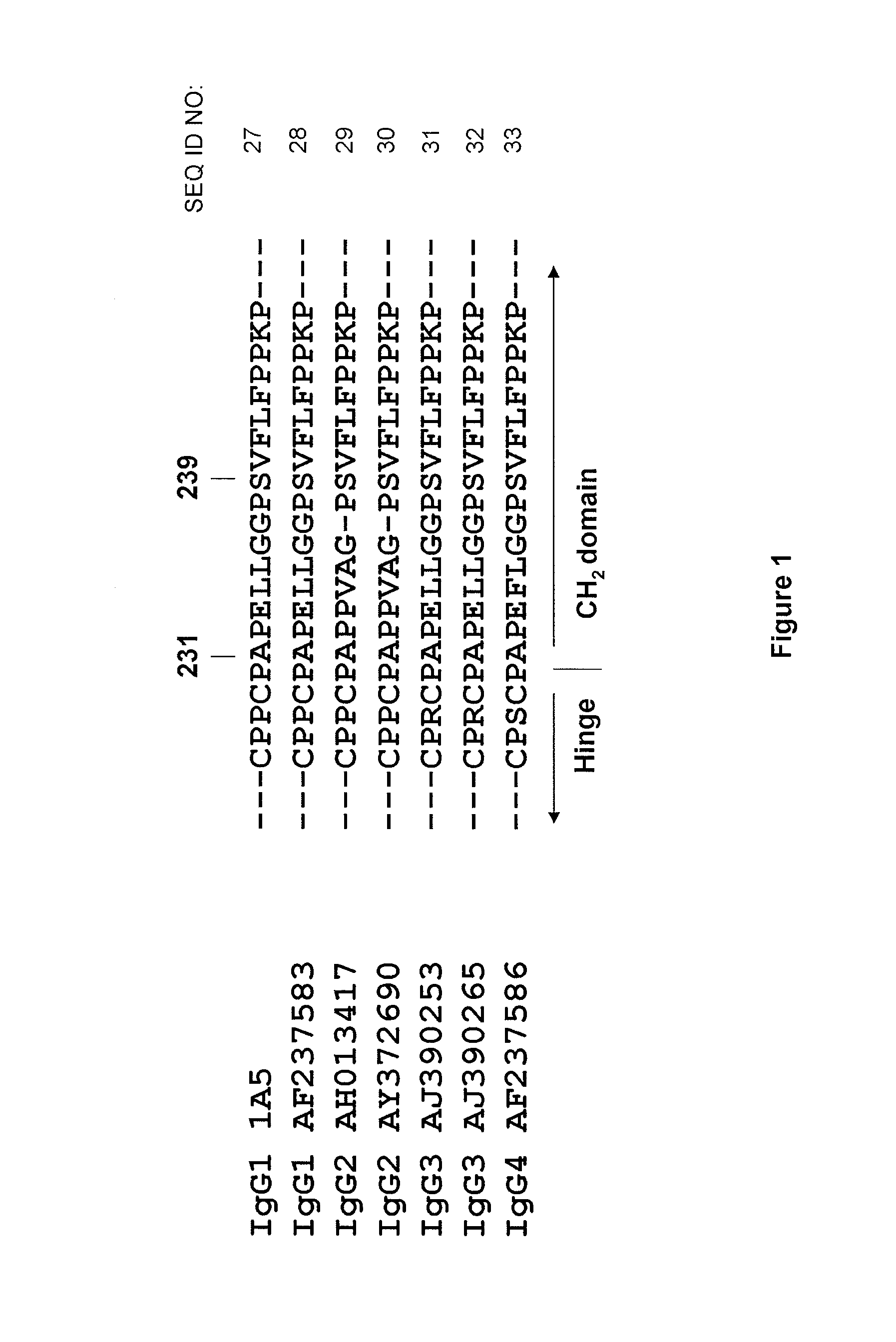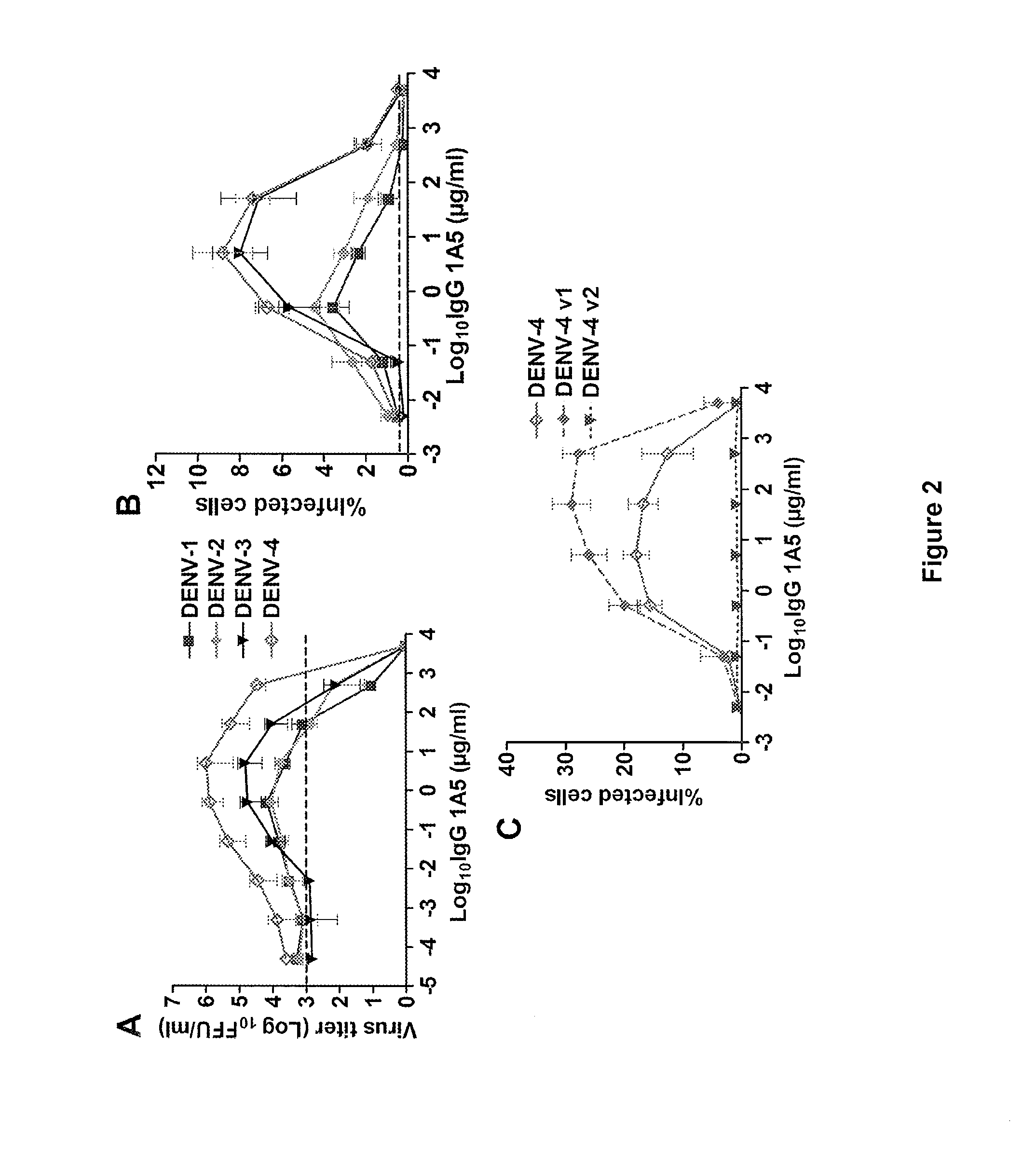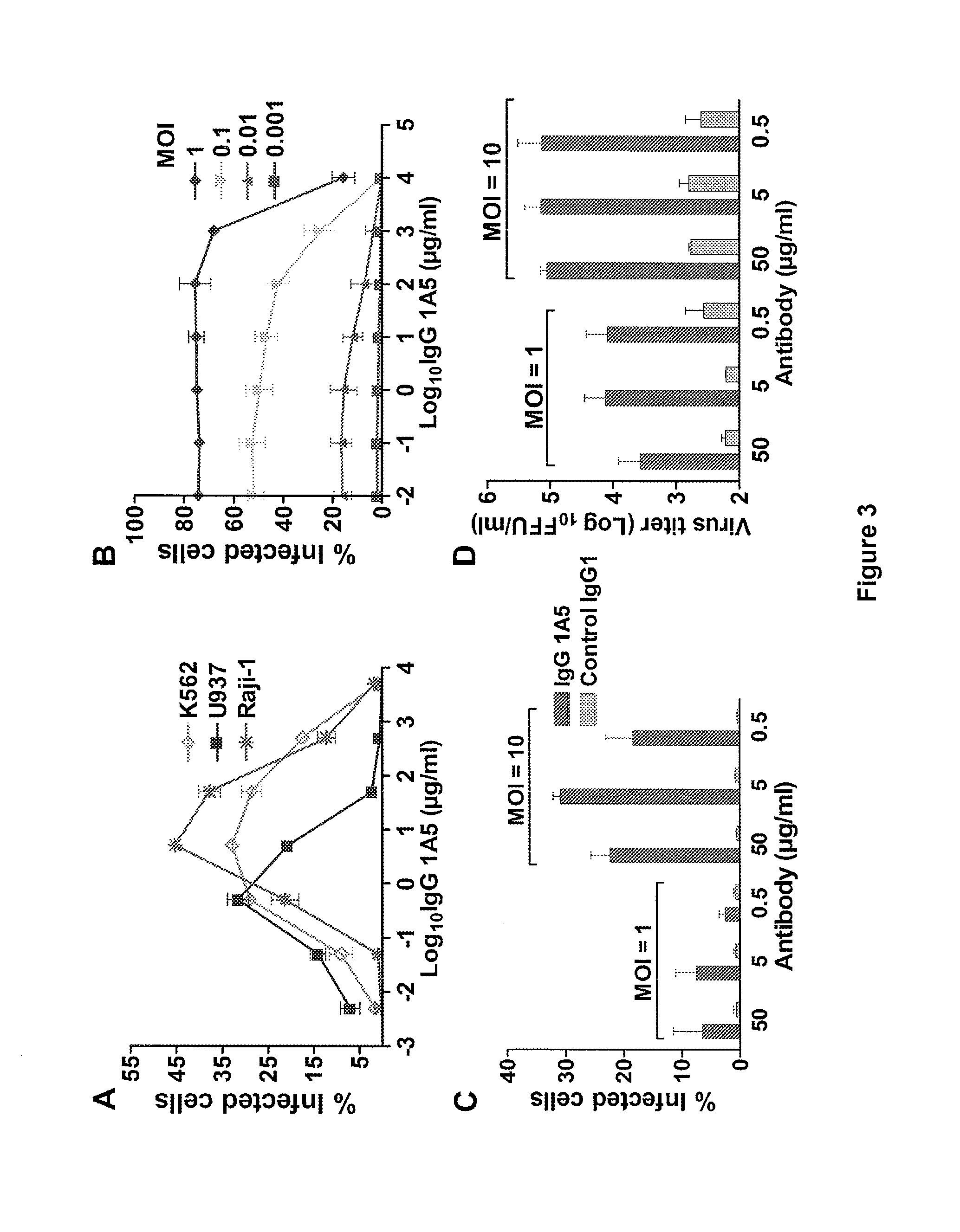Monoclonal antibodies against dengue and other viruses with deletion in fc region
a dengue and other virus technology, applied in the field of immunology, can solve the problems of high fatality rate, and achieve the effect of reducing antibody-dependent enhancement (ade) and enhancing denv replication
- Summary
- Abstract
- Description
- Claims
- Application Information
AI Technical Summary
Benefits of technology
Problems solved by technology
Method used
Image
Examples
example 1
[0166]Monoclonal Antibody-Mediated Enhancement of Dengue Virus Infection In Vitro and In Vivo and Strategies of Prevention
[0167]Infection with dengue virus (DENV) or any other flavivirus induces cross-reactive, but weakly- or non-neutralizing antibodies that recognize epitopes involving the fusion peptide in the envelope glycoprotein (E). Humanized monoclonal antibody (MAb) IgG 1A5, derived from a chimpanzee, shares properties of cross-reactive antibodies. MAb IgG 1A5 up-regulated DENV infection by a mechanism of antibody-dependent enhancement (ADE) in a variety of Fc receptor-bearing cells in vitro. A 10- to 1000-fold increase of viral yield in K562 cells, dependent on the DENV serotype, was observed over a range of sub-neutralizing concentrations of IgG 1A5. A significant increase of DENV-4 viremia titers (up to 100 fold) was also demonstrated in juvenile rhesus monkeys immunized with passively transferred dilutions of IgG 1A5. These results, together with earlier findings of ADE ...
example 2
Cultured Cells
[0188]Simian Vero cells and mosquito C6 / 36 cells were grown in Minimum Essential Medium (MEM). Human erythroleukemic K562 cells were grown in Iscove medium, myelomonocytic U937, Raji-1 (a B-cell line) and its derived Raji-1 (DC-SIGN) cells were grown in Advanced RPMI 1640 medium and 293 T cells were cultured in Dulbecco's Modified Eagle Medium. All media were supplemented with 10% fetal bovine serum (FBS), 0.05 mg / ml gentamycin, and 2.5 units / ml fungizone. Mammalian cells were propagated at 37° C. and C6 / 36 cells at 32° C. Media were purchased from Invitrogen and cells from American Type Culture Collection, except for cell lines Raji-1 and Raji-1 (DC-SIGN), which were kindly supplied by Dr. D. Littman, New York University School of Medicine.
Primary Monocytes
[0189]Mononuclear cells were separated from whole blood of rhesus monkeys by Ficoll-Hypaque gradient centrifugation, washed and resuspended in phosphate buffered saline (PBS) plus EDTA and 0.5% bovine serum albumin ...
example 3
Epitope Determinants of a Chimpanzee Dengue Virus Type 4 (DENV-4)-Neutralizing Antibody and Protection Against DENV-4 Challenge in Mice and Rhesus Monkeys by Passively Transferred Humanized Antibody
[0199]Chimpanzee Fab-derived monoclonal antibody (MAb) IgG 5H2 is specific for dengue type 4 virus (DENV-4) and able to neutralize the virus at a high titer in vitro. The epitope detected by the antibody was mapped by isolation and sequencing of antigenic variants of the virus. One variant contained a Lys174-Glu substitution and another contained a Pro176-Leu substitution in domain I of DENV-4 envelope protein (E). These closely spaced mutations reduced binding affinity to the antibody by 18 to >100 fold. Humanized IgG 5H2 produced from an expression vector has been shown to be a variant, containing a 9-aminoacid deletion in the Fc region which completely ablates the antibody-dependent enhancement activity of DENV replication in vitro. The variant MAb, termed IgG 5H2 ΔD, is particularly a...
PUM
 Login to View More
Login to View More Abstract
Description
Claims
Application Information
 Login to View More
Login to View More - R&D
- Intellectual Property
- Life Sciences
- Materials
- Tech Scout
- Unparalleled Data Quality
- Higher Quality Content
- 60% Fewer Hallucinations
Browse by: Latest US Patents, China's latest patents, Technical Efficacy Thesaurus, Application Domain, Technology Topic, Popular Technical Reports.
© 2025 PatSnap. All rights reserved.Legal|Privacy policy|Modern Slavery Act Transparency Statement|Sitemap|About US| Contact US: help@patsnap.com



